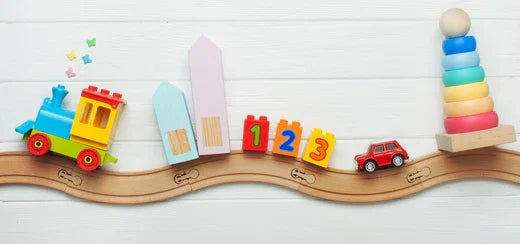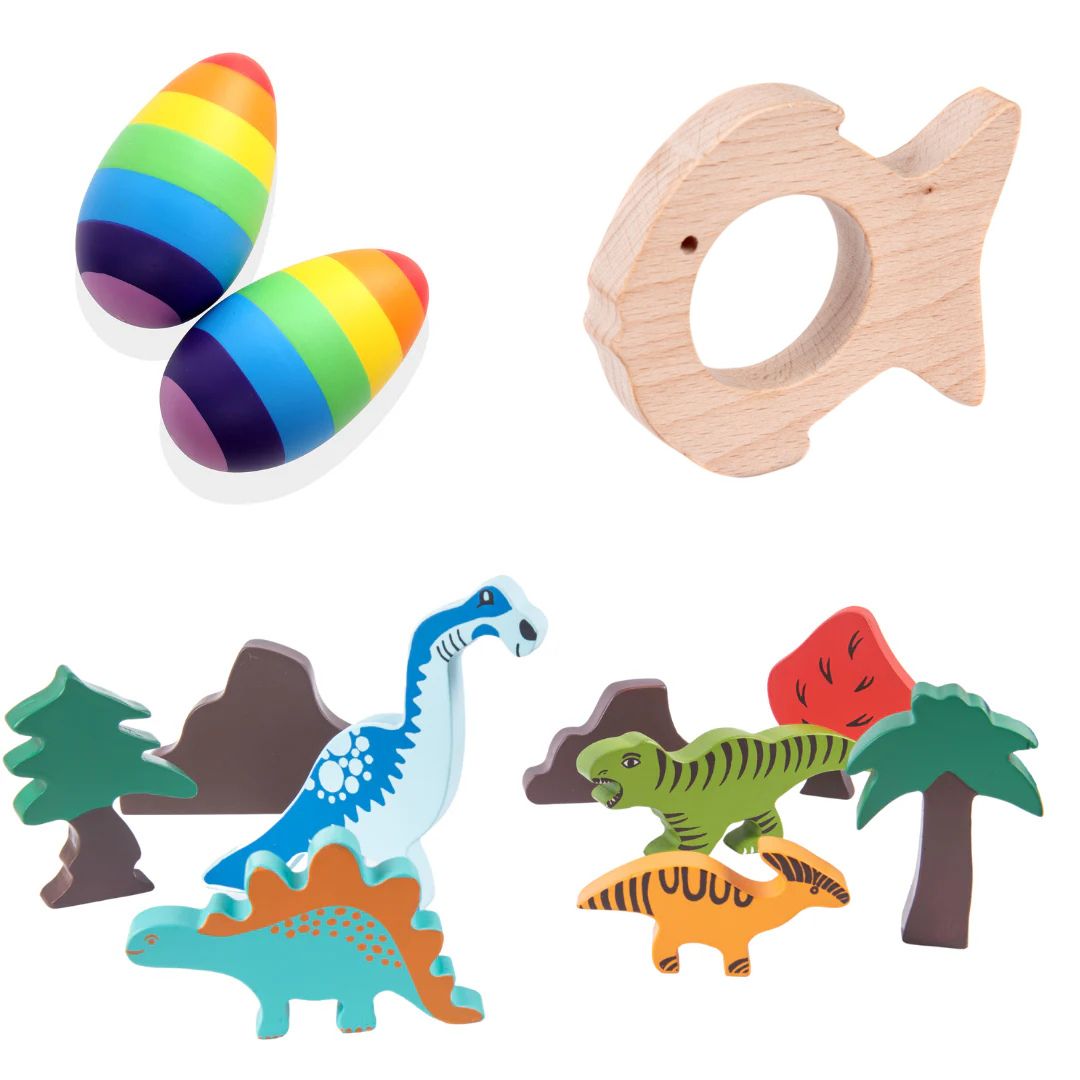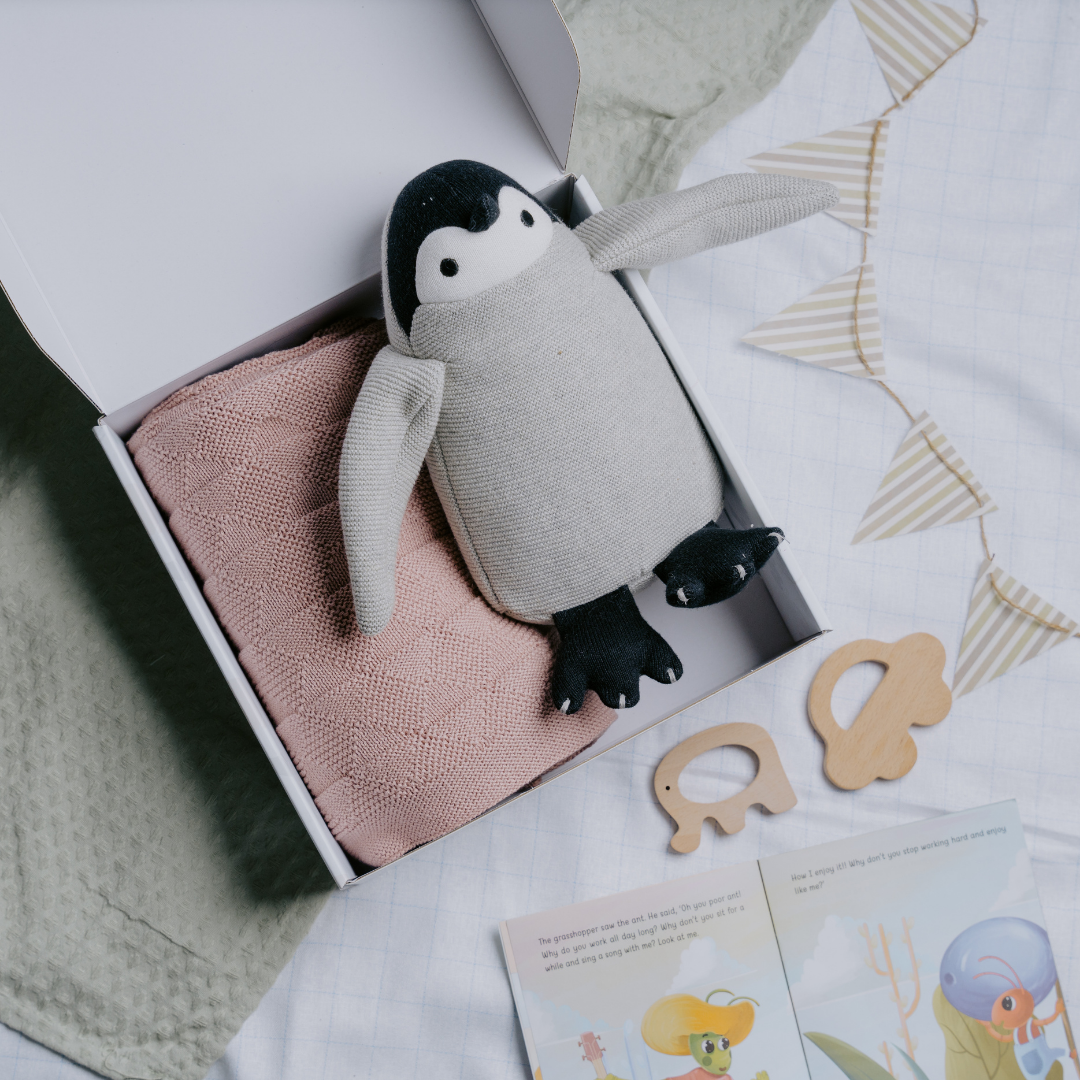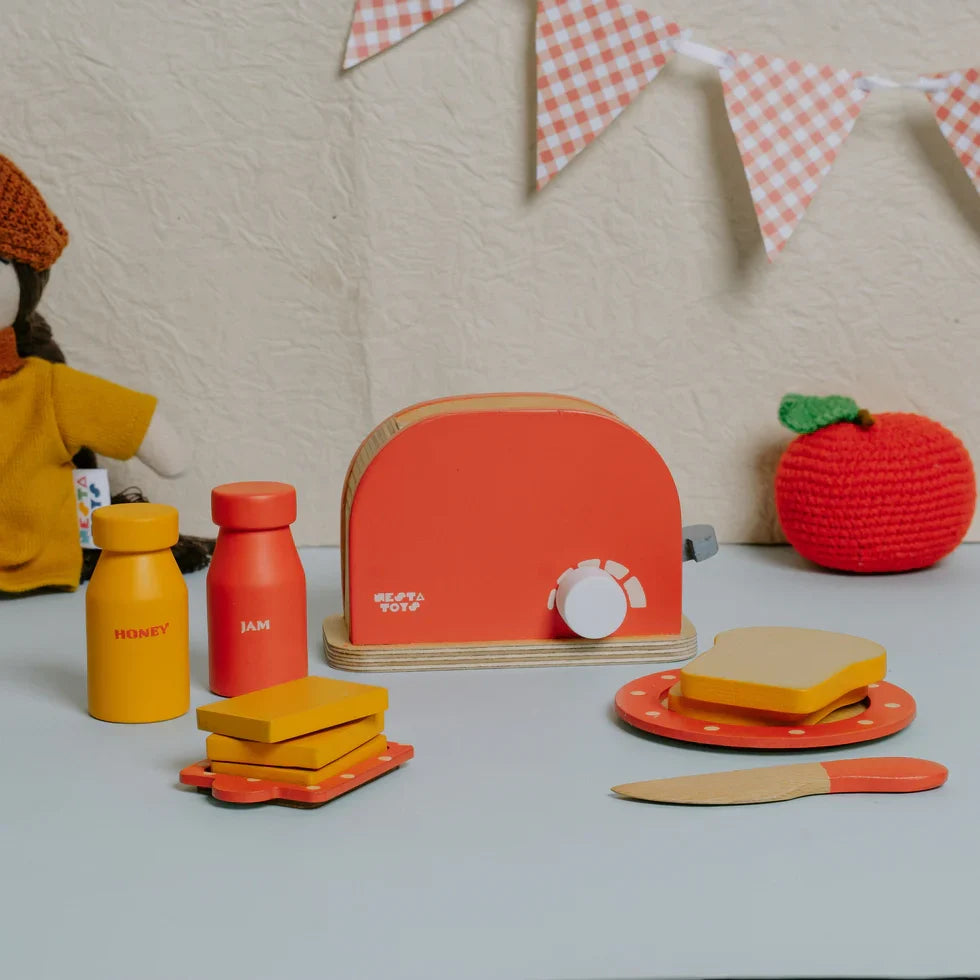In the world of children’s toys, parents often find themselves at a crossroads: Should they choose wooden toys or plastic toys? As we become more aware of our environmental impact and the safety of children's products, this question has never been more relevant. While both wooden and plastic toys have their own advantages, wooden toys are increasingly being hailed as a better alternative for reasons spanning sustainability, safety, aesthetics, and developmental benefits. In this blog, we'll explore why wooden toys might be better than plastic ones and whether they truly provide a superior playtime experience for children.
1. Environmental Impact and Sustainability
One of the most compelling reasons to consider wooden toys over plastic is their environmental impact.
Wooden Toys: Wooden toys are typically made from renewable resources, especially when manufacturers use responsibly sourced or certified wood. Many companies source wood from sustainably managed forests, where trees are replanted after harvesting. Wooden toys are biodegradable and non-toxic, leaving a lower environmental footprint at the end of their life cycle. They don't contribute to the massive amounts of plastic waste that accumulate in landfills or pollute oceans.
Moreover, the production of wooden toys typically requires less energy compared to plastic toys. Wooden toys can be upcycled or repurposed, extending their lifespan. Some even become heirlooms, passed down through generations, adding to their timeless appeal.
Plastic Toys: In contrast, plastic toys are made from petroleum-based materials, which are non-renewable and contribute to environmental degradation. The production of plastic toys consumes a lot of energy and releases harmful emissions. Discarded plastic toys take hundreds of years to decompose, causing long-term environmental damage.
While recycling is an option, only a fraction of plastic toys are recycled due to the complexity of separating different types of plastic. Thus, plastic toys often end up in landfills, leaching chemicals into the soil and water. Microplastics from broken plastic toys contribute to global environmental issues, harming marine life and possibly human health.
Verdict: In terms of sustainability and environmental impact, wooden toys are a clear winner. They are made from renewable resources, have a lower carbon footprint, and don’t contribute to the plastic waste crisis.
2. Safety and Health Concerns
Safety is crucial when choosing children's toys, as parents are more aware of potential hazards, especially with long-term exposure.
Wooden Toys: Wooden toys are generally regarded as safer for children, primarily because they are made from natural materials. Wooden toys are typically free from harmful chemicals like phthalates, PVC, or BPA, which are common in plastic toys. Non-toxic paints and finishes on wooden toys ensure that children aren’t exposed to harmful substances during play.
Additionally, wooden toys are sturdier and less likely to break into small, sharp pieces that could pose a choking hazard. Wooden toys are durable and don’t break down into tiny fragments, reducing the risk of children accidentally ingesting small pieces.

Plastic Toys: Some plastic toys, especially from less regulated manufacturers, may contain harmful chemicals like BPA, phthalates, and lead. These chemicals have been associated with health issues like hormonal disruptions and developmental problems in children. Toys that break or wear down can pose a greater risk, as small pieces may become choking hazards or release harmful particles.
Although many high-quality plastic toys follow strict safety regulations, cheaper, mass-produced ones still pose a risk of harmful chemical exposure.
Verdict: From a safety perspective, wooden toys are generally a better choice due to the absence of harmful chemicals and their sturdy construction, reducing the risk of injury or chemical exposure.
3. Durability and Longevity
Toys are subjected to rough handling, whether it’s during vigorous play or by curious toddlers exploring every possible way to interact with them. Therefore, durability plays a crucial role in determining whether wooden toys are a better choice than plastic ones.
Wooden Toys: Wooden toys are known for their durability. They can withstand rough play and don’t break easily. This is one reason why wooden toys often become family heirlooms, passed down through generations. Wooden toys are built to last, maintaining their quality and charm even after years of use. Wooden toys develop a rustic, timeless appeal as they age, rather than looking worn out or broken.
Plastic Toys: Plastic toys, while often more colorful and detailed, are far more prone to breaking, especially if they are made of low-quality plastic. Plastic toys can break easily, lose shape, or become brittle and faded from sunlight and environmental exposure.
While high-end plastic toys made by reputable brands may last longer, they generally won’t stand the test of time in the same way that wooden toys do. Plastic toys often go out of style quickly since they are usually based on passing trends.

Verdict: Wooden toys last longer and are sturdier, making them a smarter investment than plastic toys that break easily or go out of style.
4. Educational Value and Cognitive Development
Toys play a significant role in a child's development, contributing to their cognitive, motor, and sensory skills.
Wooden Toys: Wooden toys are often simpler in design compared to plastic toys, encouraging open-ended play. Wooden toys encourage imagination and problem-solving since they don't rely on flashy features or lights. For example, wooden blocks allow children to build structures in various ways, promoting critical thinking and fine motor skills.
Many wooden toys, such as puzzles, building sets, or stacking toys, encourage children to engage in tactile learning, enhancing their hand-eye coordination and spatial awareness. Montessori and Waldorf schools use natural, simple materials like wood to promote self-directed and imaginative play.
Plastic Toys: Plastic toys, on the other hand, often rely on pre-designed functions—buttons that trigger sounds, lights, or movements. While these features can be entertaining, they can limit a child's ability to think creatively or engage in independent problem-solving. Plastic toys are often interactive but can lead to passive play, where kids just watch or react instead of actively engaging.
That said, there are many plastic toys that offer educational value, especially those designed with STEM (Science, Technology, Engineering, and Mathematics) in mind. However, these often require batteries and electronics, which may detract from the sensory experiences that wooden toys provide.
Verdict: Wooden toys often offer greater educational value by encouraging open-ended, imaginative play that supports cognitive and motor development.
5. Aesthetic and Sensory Appeal
Children’s toys aren’t just about play; they also contribute to the visual and sensory environment of a child’s life.
Wooden Toys: Wooden toys are often praised for their natural, aesthetic beauty. They tend to have a timeless appeal, with smooth, organic textures that offer a pleasant tactile experience. Wooden toys often come in earthy tones or soft, non-toxic paints, which blend seamlessly into a home environment without overwhelming the senses.
The texture of wooden toys, being more natural and varied, provides a different sensory experience than plastic, helping children develop a more diverse sense of touch.
Plastic Toys: Plastic toys are generally more colorful and eye-catching, which can be appealing to younger children. However, they can also overwhelm the senses with bright colors, flashing lights, and loud sounds. Some parents may find the loud, garish appearance of plastic toys to be less desirable, especially when it clashes with a home’s aesthetic.
Moreover, the smooth, artificial feel of plastic doesn’t offer the same tactile richness as wood, which can be less stimulating for sensory development.
Verdict: Wooden toys offer a more aesthetically pleasing and sensory-rich experience compared to plastic toys, which can be overwhelming and less organic.

6. Cost and Availability
Wooden Toys: Wooden toys tend to be more expensive than plastic toys, primarily due to the quality of materials and craftsmanship involved in their production. However, this initial investment can be offset by their longevity and durability, as they are less likely to need replacing.
Plastic Toys: Plastic toys are often cheaper and more readily available, especially mass-produced options. They can be found in abundance in most stores and online marketplaces. However, their lower cost often reflects lower quality, meaning they may need to be replaced more frequently.
Verdict: While wooden toys may have a higher upfront cost, they offer better value for money in the long term due to their durability and longevity.
7. Cultural and Emotional Significance
Wooden toys carry a sense of nostalgia and tradition. Many people associate wooden toys with their own childhood, fostering an emotional connection that plastic toys often do not evoke. In some cultures, wooden toys are seen as more wholesome and closer to nature, reinforcing values of simplicity and sustainability.
On the other hand, plastic toys are often tied to current trends and mass consumerism. While they may offer entertainment, they lack the timeless, emotionally resonant quality that wooden toys often have.
Conclusion: Are Wooden Toys Better Than Plastic?
In many ways, wooden toys emerge as the superior choice. They are environmentally friendly, safer, more durable, and offer greater educational value than plastic toys. Wooden toys also provide a richer sensory experience and have a timeless aesthetic that plastic toys often lack. While plastic toys may be more affordable and widely available, their environmental impact, safety concerns, and tendency to break or wear out quickly make them a less desirable option for parents seeking high-quality, sustainable toys.
Ultimately, wooden toys encourage open-ended, imaginative play that benefits a child's development while contributing positively to the environment—a win-win for both children and parents.
Discover our 0-6 months toy collection, the perfect choice for gifting something pure and special to your newborn.









